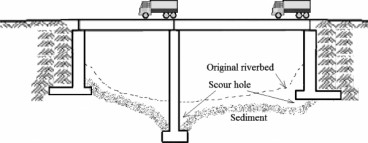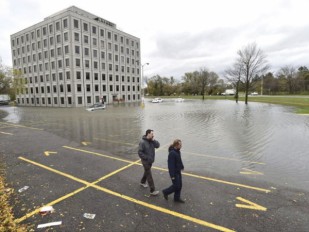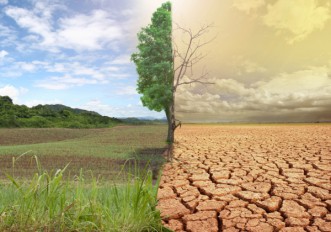European cities and climate change: Their adaptation is a necessity in order to survive

A new report from the European Environment Agency (EEA) shows the benefits of investing in long-term preventive measures that cities should take to improve their resilience.
A new report from the European Environment Agency (EEA) shows the benefits of investing in long-term preventive measures that cities should take to improve their resilience.
During the last years, urban dwellers are repeatedly and increasingly challenged with climate change impacts such as prolonged heat waves, flooding, extreme precipitation or extended drought periods. The new EEA report ‘Urban adaptation to climate change in Europe 2016 – transforming cities in a changing climate’ published earlier this month, proposes several actions that urban planners and policymakers should practice in order to minimize the impact of climate change. But the most important of all, is the long term adaptation planning (for at least the next 50-100 years) via effective synergies and appropriate governance, as it is explained that short-term coping or incremental adaptation measures alone will not be enough to mitigate the threats.
The report includes many examples from European cities vulnerable to natural disasters driven by climate change, and how they adjusted in order to survive. It also refers to a number of adaptation and mitigation measures that could be taken, underlining that sometimes there are synergies between them. For example, passive or active cooling of the indoor climate, such as building insulation, white roofs, green roofs, sunscreens or storing heat and cold prevent buildings from overheating and also save energy for cooling. Tree canopies cool the city and at the same time remove atmospheric pollutants. Cycling or walking instead of driving mitigates GHG emissions as well as anthropogenic heat in the city. Also important to keep in mind is that adaptation options, particularly those of conventional 'grey' infrastructure, may make greater demands on energy and material resources. They require a smart design to minimize trade-offs in terms of GHG emissions and, hence, to limit the mitigation challenge. From the other hand, mitigation measures such as insulation programs may well lead to overheating in buildings when solar radiation enters through windows and is trapped, therefore they should be combined with adaptation measures such as shading and ventilation.
Responding effectively to climate change ensures a good quality of life for citizens (i.e. keeping them healthy and safe)and is now more important than ever, as it affects many aspects of urban living.
Source: EEA
Examples of different adaptation approaches and complementary benefits at different water levels due to flooding (Source: EEA)
Dealing with climate change challenges: examples of incremental and transformational approaches (Source: EEA)
Source: EEA
Want to read more like this story?

The 'urban heat island' effect could force several major cities to face climate change costs at least twice as big as the rest of the world
Oct, 10, 2017 | NewsSome of the world’s largest cities could face temperatures up to 8°C higher than those of...

Cities to live in to escape climate change
Nov, 11, 2016 | NewsA list of the most climate change-adaptive cities in North America A list of the most climate cha...

How climate change has affected real estate business
Nov, 11, 2019 | NewsClimate change is a phenomenon that leads to sea water-level rise affecting the coastal areas. But h...

How climate change is affecting the safety of bridges
Oct, 15, 2019 | NewsA new study, recently published in the American Society of Civil Engineers (ASCE) Jou...

Canada changes its building code to tackle climate change
Apr, 15, 2019 | NewsCanada's building code is heading towards environmental sustainability. The new regulations will be...

Climate change could cause over 500,000 extra deaths in 2050
Apr, 04, 2016 | NewsHealth impacts due to changes in agricultural production are currently examined Health impacts du...

Carbon sequestration in soils cannot fix climate change to the extend it was thought to
Nov, 01, 2016 | NewsSoil as carbon storehouse needs to be part of, not the whole solution Soil as carbon storehouse n...

Nations producing fewer greenhouse gases seem most vulnerable to climate change
Apr, 07, 2016 | NewsConversely, the biggest emitters are the least affected, according to new study Conversely, the b...

Climate change brings new challenges in road surfaces
Jul, 24, 2019 | NewsAccording to a new study, the thickness of asphalt layers should increase by 7% to 32% in order...
Trending

Vertical gardens in Mexico City to combat pollution

Saudi Park Closed After 360 Big Pendulum Ride Crashes to Ground, 23 injured

Characteristics of Load Bearing Masonry Construction

Taipei 101’s impressive tuned mass damper

Dutch greenhouses have revolutionized modern farming

Federal court rules Biden’s offshore drilling ban unlawful


